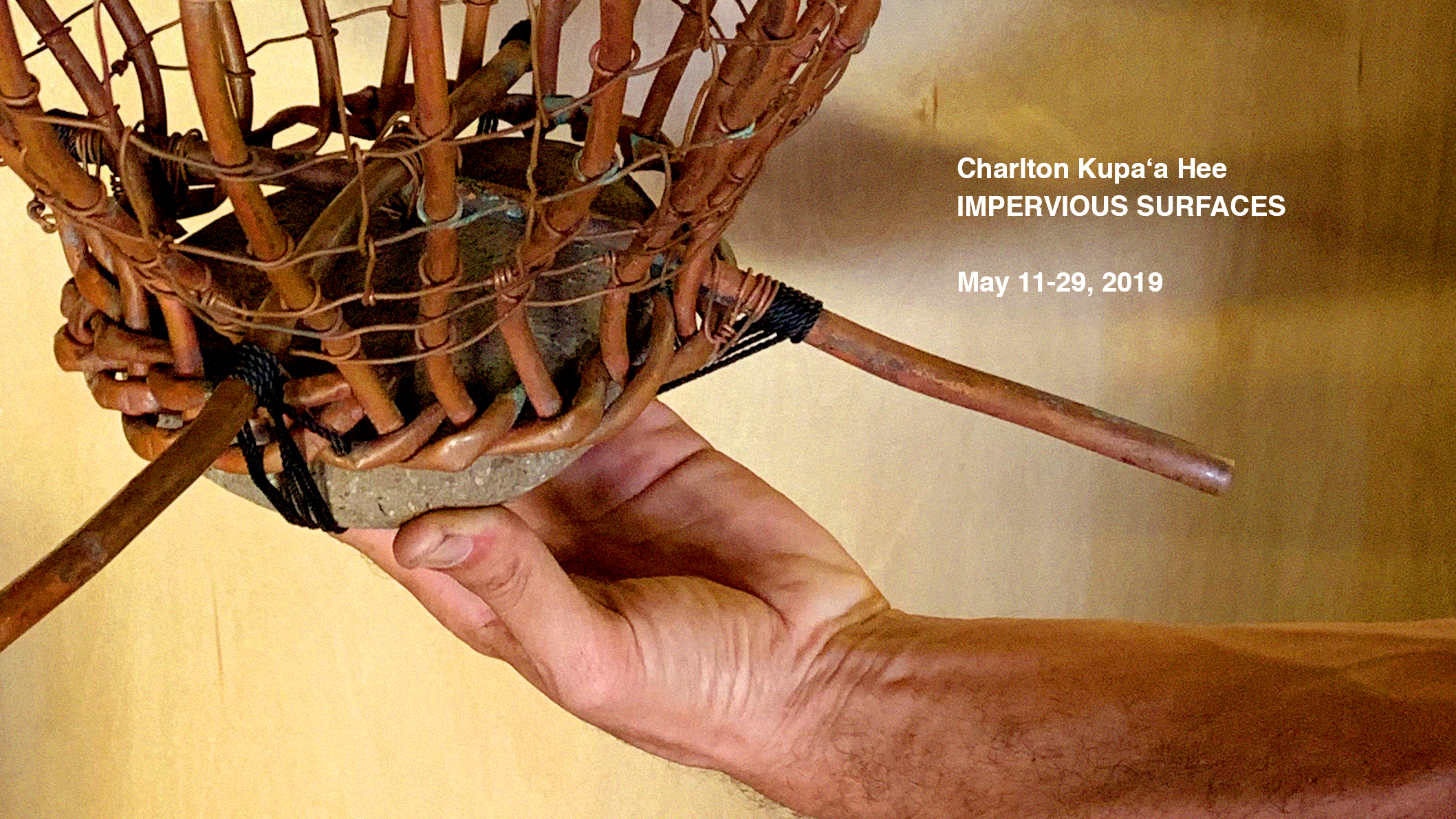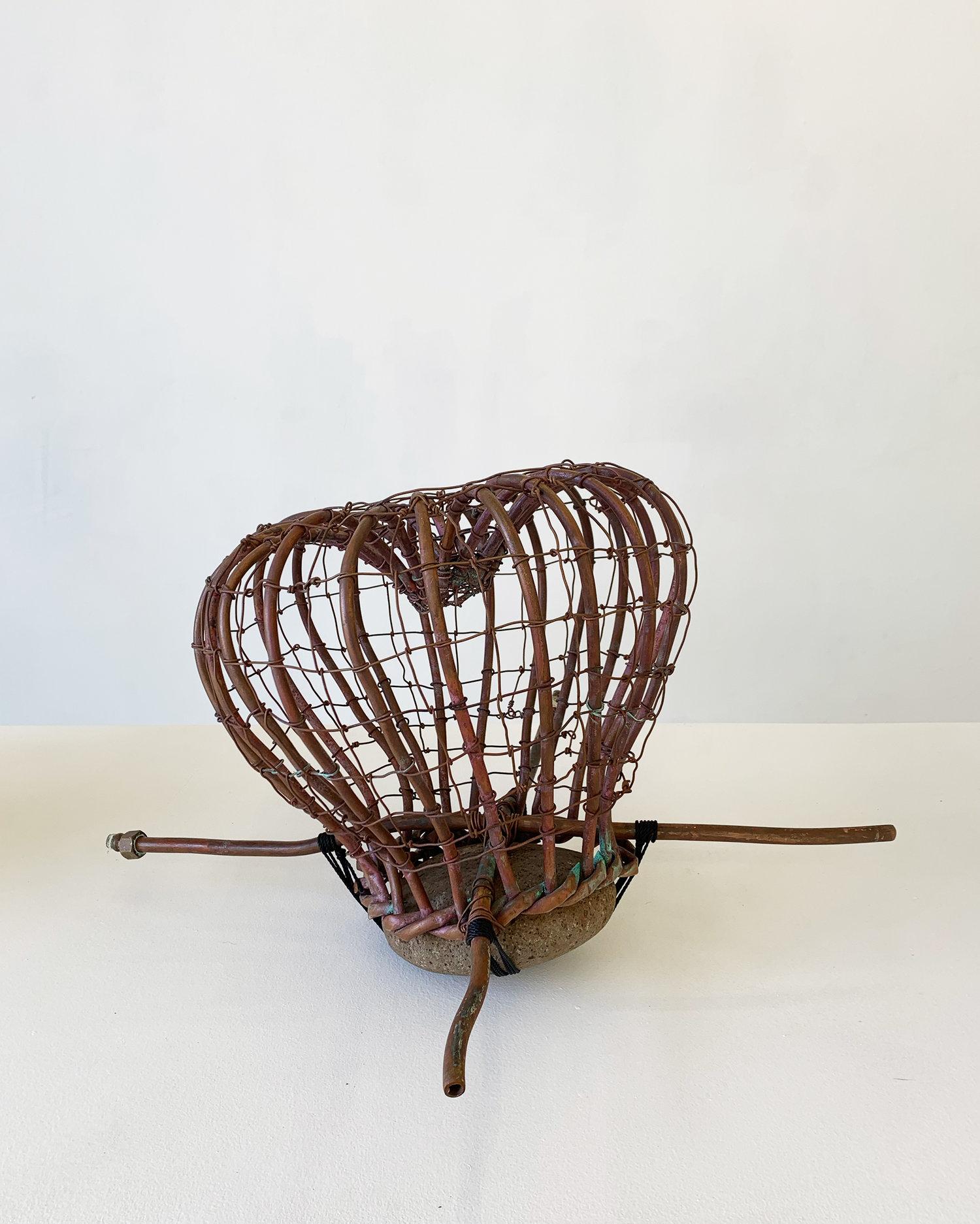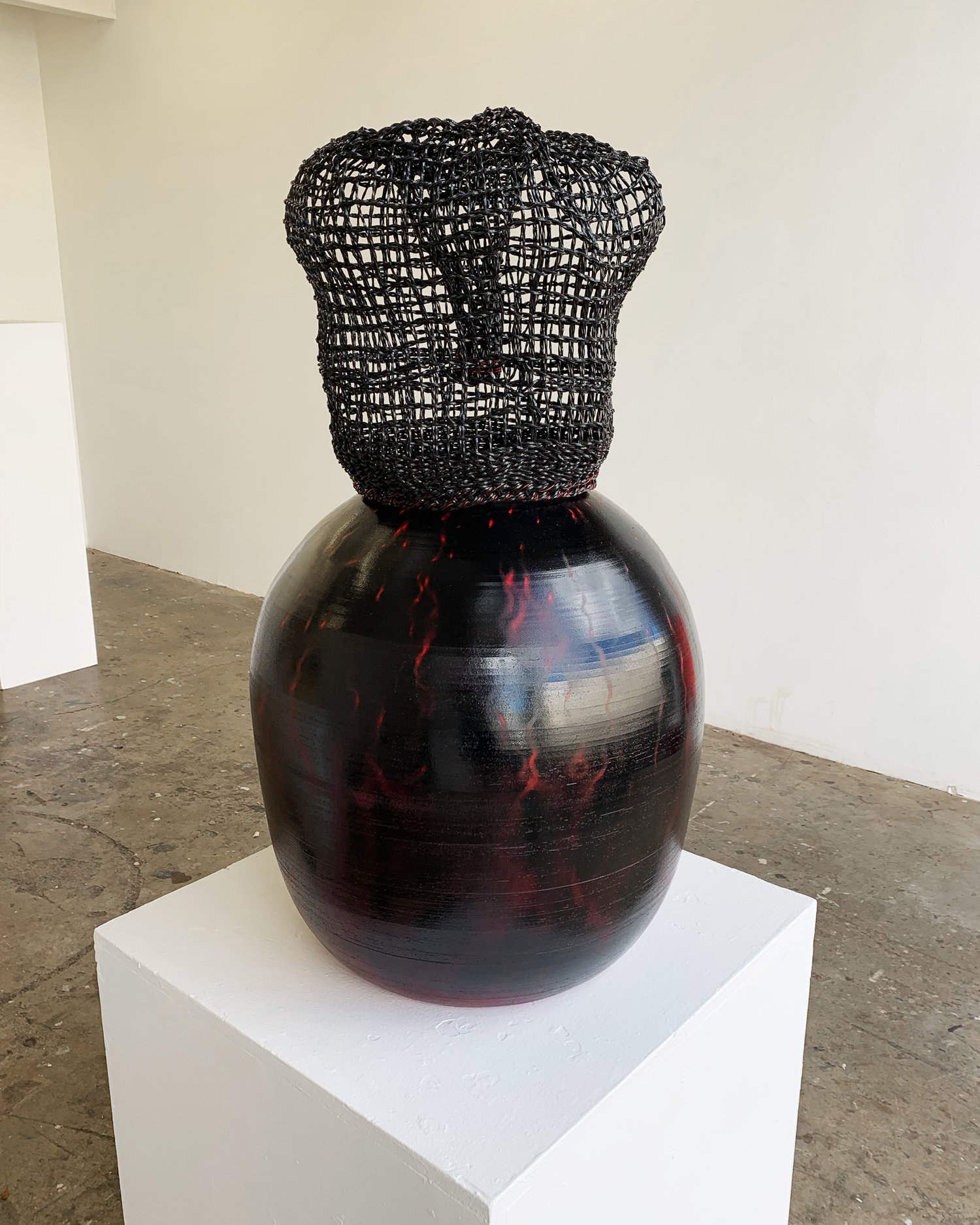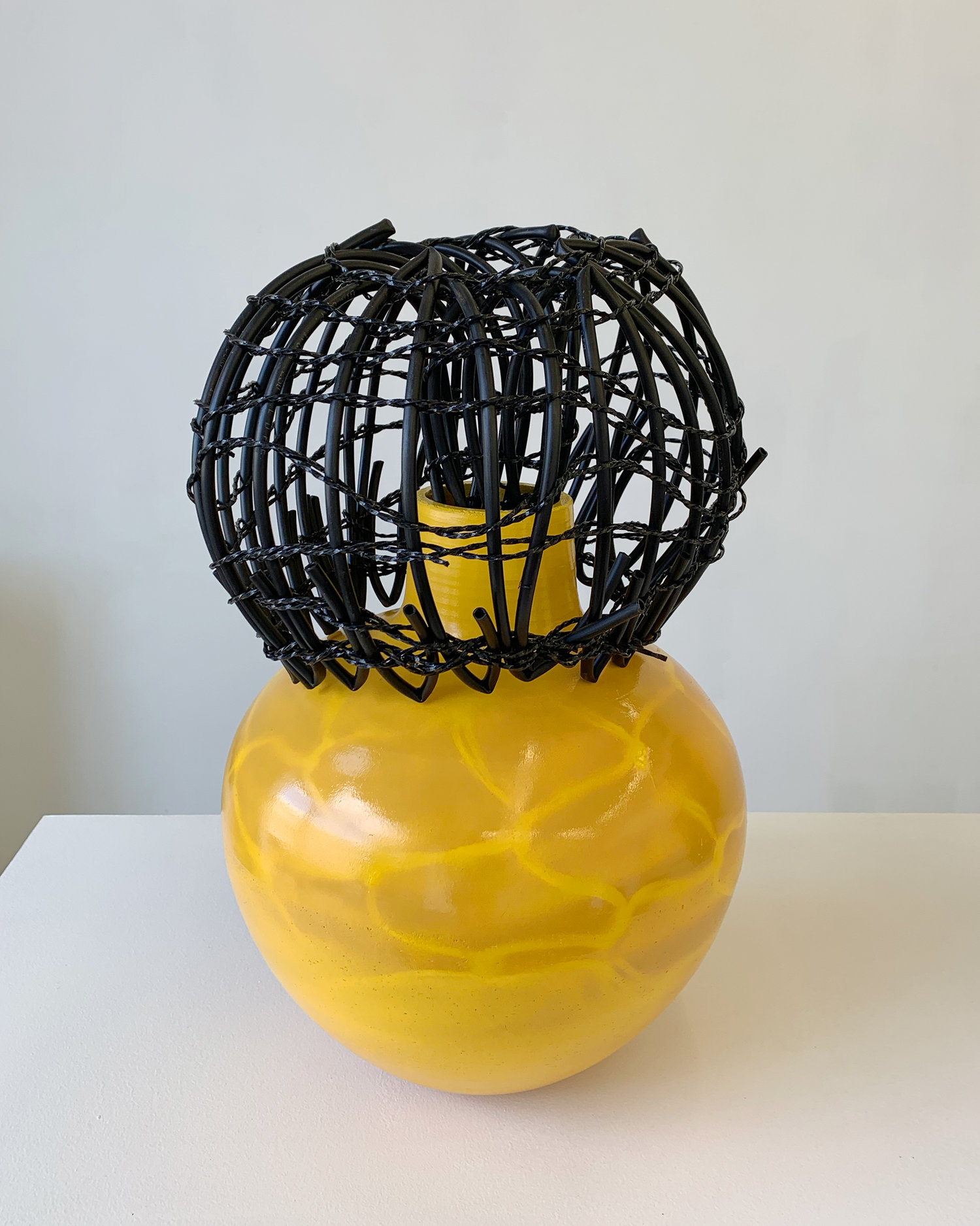Impervious Surfaces
Charlton Kupaʻa Hee
May 11 - 29, 2019
Charlton Kupaʻa Hee
May 11 - 29, 2019

We, the islands of Hawaiʻi, look to redefine our relationship with a finite water resource, reevaluating decades of deleterious decisions regarding groundwater management and acquiring protections for this precious resource into the future. Communities in Maui fight for reparation of water ways run dry by plantation era transgressions. The water-protectors of Lake Waiau atop Mauna Kea protest further development of a sacred place. Here on Oʻahu, as 100-year-floods threaten to swamp Waikīkī, Mōʻiliʻili and Kapahulu, the paved suburbs and various valleys that channelize their rivers to run to the Ala Wai canal fight to keep their open spaces “as is” rather than convert them to flood mitigation fields.
These various hīnaʻi, basket, forms allude to our islands’ past, present and future relationship with water. Hawaiian tradition speaks of a time when ʻoʻopu, freshwater goby, were in such abundance that river mouths would roil with activity. Hīnaʻi were fashioned to trap ʻoʻopu as they made their way to the high mountain pools to feed and spawn. The use of drip-line irrigation tubing and weed-whacker line highlight our present-day valuation of water as a commodity of leisure and luxury through its over use in the hospitality industry and the upkeep of landscapes not suited for arid tropical climates (including but not limited to rolling hills of manicured grass and man-made water hazards). The restoration of the hīnaʻi form into our visual vocabulary is my hope that our future endeavors be aimed towards healthy waters, healthy nearshore reefs and sustainable water use.








